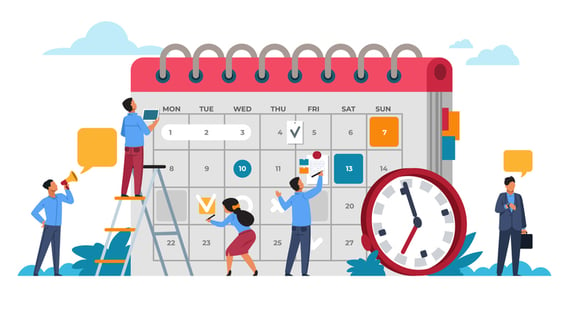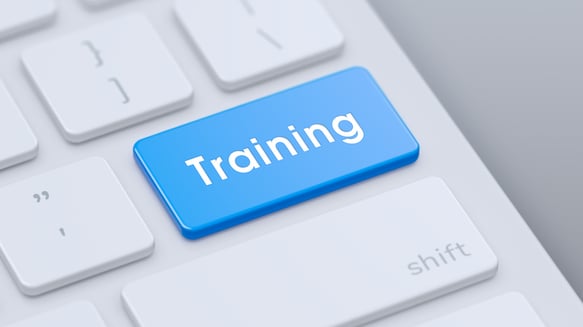Contact Center | Call Center | Support Services | Customer Experience
What Does Contact Center Onboarding Look Like? (5 Things to Expect)

Joe Geroux is the Vice President of Support Services at CCI Systems. He has over 30 years of experience within Telecommunications, working with major operators, including Charter Communications, AT&T, MediaOne and Continental Cablevision. His experience includes leadership roles in Sales, Customer Support, Operations and Field Services. Joe has acquired extensive knowledge in Hospitality and the Multi-Dwelling industry, both in residential and commercial services, while gaining additional experience with Broadband and Fiber Networks.
While your company is being onboarded by an outsourced contact center, it is important to know what that process might look like.
You may be thinking…
- What should my company expect?
- What should we be prepared for?
- Do we need a detailed knowledge base?
- How involved will we be in the training process?
Contact center agents take and consider your company’s needs every time they speak with one of your customers. They are your customer support system and representatives of your reputation.

At CCI Systems, contact center onboarding is a collaboration between the company seeking our services and CCI’s team of experts. CCI takes a balanced approach, onboarding 3-to-4 customers per quarter. We pride ourselves as a literal extension of your team.
Knowing the flow and execution of contact center onboarding from the sales process to recorded calls to translation of those recorded calls to the creation of the training plan, and finally to the go-live date will prepare your company for working with a third party call support provider.
Understanding this process will allow you to find a contact center that is the best fit for your company and customer base.
1. Define the Sales Process
For any company that intends to use third party call support, good onboarding always begins with the sales process.
Within the sales process stage, a high level of detail is required to paint an accurate picture of what support looks like for an individual company. This can depend on company size, industry, region, etc.
It is incredibly important to define what is essential, preferred and wanted in the way of support.
This includes reviewing the processes, the procedures, and the applications that are going to be used during the service of the end users (i.e. customers).
Expectations contributing to customer satisfaction should be thoroughly documented and reviewed.
You should define:
- performance expectations.
- service level agreements.
- how fast the phones are answered.
- what the call makeup entails.
- what the first call resolution (FCR) target is.
Identifying common goals and elements between the company seeking support and the contact center is truly a collaborative effort.
For the best call support experience when you enter a sales process discussion, make sure to incorporate these elements.
2. Call Recordings Under Modules
Before the proposal and scope of work are written, a contact center will typically set up a series of calls.
Preliminary Proposal
Oftentimes, the first thing to occur is a preliminary proposal is given to your company. This estimate considers the needs of the client from a service and budgetary standpoint.
If the scope of work is greater than what was initially described, this proposal is always subject to change.
By using your company’s information for the policies, processes, and procedures, a contact center will be able to incorporate proprietary processes into a dedicated knowledge base.
A knowledge base allows a contact center agent to respond to an end user with pre-established policies, approved by the company the agent is serving.
*If your company needs help organizing and/or building knowledge base materials, this is appropriate to address during the sales process stage.
Call Modules
After the preliminary proposal, a series of recorded calls will be scheduled and divided into key learning modules.
Each recorded call will address specific instances an agent may encounter.

A schedule of calls may look something like this:
- Billing.
- How to receive a payment.
- How to troubleshoot internet.
- How to troubleshoot video.
- How to onboard a new customer.
- Serviceability check.
During these interactions, the company seeking services will demonstrate how the call should flow. There are two components to call flow: verbal and technical.
How a conversation flows verbally is critical to customer experience and customer satisfaction. From a technical perspective, it is necessary to understand how the contact center agent will begin troubleshooting within all the applications accessed through the computer.
Module calls are functional by nature. Expect to schedule at least an hour per function to cover the necessary protocols.
Depending on the needs of the company seeking service, 1-to-2 weeks is required to collect this information.
3. Translate Recorded Calls into Processes and Procedures
Following the completion of the recorded calls, a training team will take the information within and translate it into a targeted format of processes and procedures.
For instance, if a call is conducted on how to receive a payment, the training staff cannot use the raw recording as part of the knowledge base.
To train employees, a standardized, consistent format will be adopted that the technicians and agents are familiar with.
After the training materials are translated and organized, a training plan will be implemented.
Roughly 1-to-2 weeks of call translation can be expected.
4. Training Plan Execution
This plan will detail how many hours of training each employee will have to go through to understand and learn the requirements of the newly onboarded customer.

It is not unusual to have each employee go through 10-to-20 hours of training.
Training can be accomplished through:
- webinars.
- self-study.
- video training.
- training workshops.
If your company requires 24/7 coverage, it is common for a third party contact center to rotate between three shifts.
At least two employees will be on each shift who have been trained underneath the specific modules for a particular company.
As a result, a minimum of 6-to-8 employees will go through training for each company at a typical U.S.-based contact center.
Before call support can go-live, approximately 8 employees undertaking 20 hours of training leave a contact center with 160 total hours of training.
Total training can take anywhere from 2-to-4 weeks, depending on the staffing requirement for your company.
If a company is using technology and/or applications the contact center is familiar with, it will speed up the training portion.
Oftentimes, training will be ongoing for 90-days before the go-live date.
5. Go-Live Date for Call Support
All told, from a signed contract to the go-live date, a normal contact center onboarding process will occur over 45-to-90 days.
If it is necessary to hire additional staff, the recruiting and hiring process, plus training would be incremental to the 90-days.
Once call support is ready to go-live, test calls are taken, recorded, and reviewed with your company on Day #1. For the following 7-to-10 days of support, expect daily calls to make any adjustments to the processes or procedures of the agents.
Depending on your company’s comfortability after hearing and witnessing the contact center agents’ performance, calls for review will be extended to once per week. After 4-to-6 weeks of this continued contact, monthly calls often suffice.

Quality Assurance and Progress Reports
During the regular call reviews, quality assurance is being conducted internally at the contact center, and your company will be receiving daily reports detailing how many calls were received and what the performance evaluations were for those calls.
After the contact center agents are performing satisfactorily for your company’s needs, any changes to procedures, service offerings, etc. will require a similar process of training and updating to the agents.
On a go-forward strategy, as new employees are hired, they go through the same training process.
Complete the Onboarding Process and Improve CX
At the end of onboarding, the contact center will take care of administrative details, like setting up phone lines for call forwarding, setting up a toll-free number (or local number), going through the ticketing system to set up customized forms, etc.
Tying up loose ends wherever they appear comes with the territory of call support and contact center accountability. Each company will have additional needs that pop up, but they do not necessarily fall into the onboarding process.
Don’t sweat it.
Every company has its nuances, regarding how they want their system used. To that end, CCI’s support services have a proven track record of agility, speed, and success when a customer needs support in a hurry.
If you jot down your company’s quirks and acknowledge them within the sales process, this will help you find a contact center team who is a good fit for your company and industry.
If you need to understand a little more about what a contact center agent does, find out how agents can dramatically improve customer satisfaction and experience by 3 different ways of troubleshooting.

